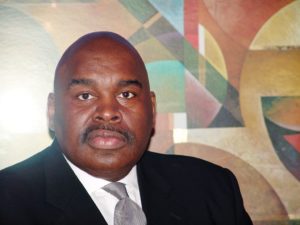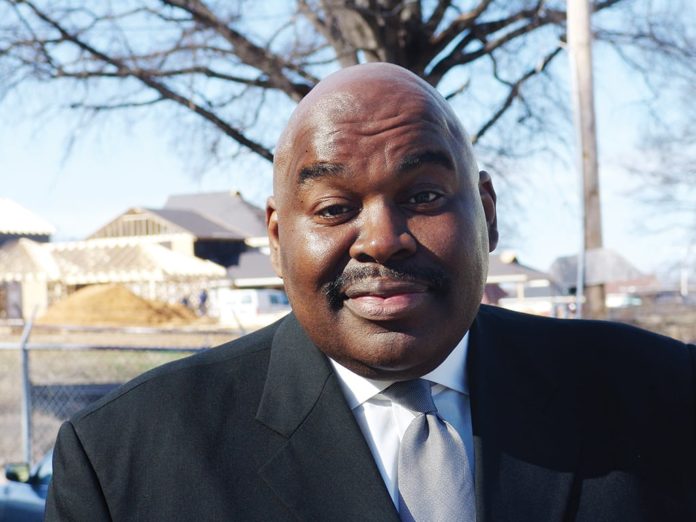Mention “side hustle” to Jeffrey Higgs and you’ve opened one of many doors that lead to his memories of growing up in the J.A. Fowler Homes housing project at 884 Mason St., Apt. 325, Memphis, TN 38126.
“One of the side hustles that 8-, 9-, 10-year-old boys had back then was parking cars at all events at Mason Temple (central headquarters of the Church of God In Christ, especially during COGIC Convocation,” said Higgs, now referred to by some as the “Mayor of Soulsville.” “This was a big deal to us as youth. It taught me entrepreneur skills at an earlier age.”
One night sticks out.
“I remember going up to this Cadillac limousine in the rain, the night of April 3rd and asking if we could ‘get you a parking space,’ not knowing at the time that in the back seat was Dr. (Martin Luther) King (Jr.). The driver told us, ‘No thanks young men, we got reserved parking, but y’all stay safe in this rain.’ ”
It was a heavy rain that – years later – the Rev. Dr. Benjamin L. Hooks (then the head of the NAACP) said sounded like “a thousand hungry lions.” It was the night that Dr. King gave his now-famous “Mountaintop” speech.
The next night, at 6:01 p.m. on April 4, the man Higgs saw in the back seat was felled by the 30.06 projectile fired from a Remington 760 Gamemaster as he stood on the balcony of the Lorraine Motel. Dr. King was rushed to St. Joseph’s Hospital and pronounced dead at 7:05 p.m.
“I remember the days after his death when they had broke into the Sears store on Third Street and the mayor declared martial law because someone has shot a BB gun at a helicopter,” Higgs said.
“(I remember) how me and my sister poked our heads out of our front door on the third floor and the National Guard stuck a rifle inside the door and told us to close it.”

Higgs has relived those 1968 moments many times over the last 50 years. In that intervening period, he parlayed the entrepreneurial spirit he showed on the night of April 3, 1968, into a career as a developer. He never let loose of his connection to 38126.
Noteworthy politicians, preachers, businesspeople, laborers and everyday neighbors have woven great works into the fabric of ZIP Code 38126. Higgs’ work puts him in that group.
The summer of 1999 is a reference point. LeMoyne Gardens, another public housing project in 38126, had been torn down. A huge empty apartment building rested where the STAX Museum now stands. The once black-owned Jones Big Star had given way to WU Grocery Store. And there in the heart of 38126, poverty-driven crime kept up a disturbing beat.
Amid the challenge, several notable and well-resourced people came together. They crafted a plan for the revitalization of the LeMoyne Gardens/Soulsville community. The helping hands included Dr. George Johnson, then president of LeMoyne-Owen College; Andy Cates, head of a newly formed non-profit group; Higgs, executive director of the LeMoyne-Owen College Community Development Corporation; Deanie Parker, an original STAX Records executive; and Phyllis Fickling, a certified public accountant.
Sherman Willmott was the STAX museum’s first curator. Robert Lipscomb, who wore multiple administrative hats for the City of Memphis, added major weight just out of eyesight. Howard Robertson put his evolving communications and marketing skills to the mix, which also included Charles Ewing, whose moving and storage firm moved and stored legendary artifacts from one of America’s premier record labels.
Much of the city and the community embraced the STAX “comeback” virtually from the beginning. The potential economic impact was enticing, as was the opportunity to recover some very critical Memphis history that had drifted toward extinction.
A young developer, Higgs and his community-development group had built the Soulsville Towne Center mixed-use office building across from the STAX Museum. The financial close on the deal was in May 2008 and, as Higgs recalled, “the national financial crisis started two months earlier.”
Against this backdrop began what many involved called the real work: creating a thriving community with engaged residents, a historically black college poised for greatness, an eager business community and a stable faith base.
“What we’ve done in Soulsville USA is not a testament to any one person, but a collective of many determined partners who have a vision for what this community was, is today, and could be,” said Higgs. “While we have seen dramatic decreases in crime and poverty since 1968, an increase in the per capita income (from a dismal $8,000 per year to an improved $13,000 today) is still well below the national poverty line,” he said.
In an ongoing way, uplift efforts are underway by organizations such as the LeMoyne-Owen College Community Development Corporation, Knowledge Quest, the Soulsville USA Neighborhood Association, South Memphis Alliance, Metropolitan Baptist Church, Four Way Grill, The Soulsville Foundation Inc., LeMoyne-Owen College, the Firehouse Black Arts Alliance, Hollis F. Price Middle College High School, the Soulsville Charter School, and the Memphis Grizzlies Foundation.
Historic Elmwood Cemetery, the Memphis Slim Collaborative, College Park Residents, the McLemore Merchants Association, the J.E. Walker House Resource Center, South Memphis Renewal Community Development Corporation, Centenary United Methodist Church, Cumming Elementary School and many other committed neighborhood partners have made personal and financial commitments to this neighborhood, and to 38126.
Since the summer of 1999, more than $150 million has been invested in housing, after-school programs, charter schools, public park improvements, affordable housing units, and an overall improvement in the quality of life.
The Soulsville Towne Center went up in 2009. In her essay “After Stax,” in the soon-to-be-released book “An Unseen Light,” Dr. Zandria F. Robinson said it never met its goals: “It was supposed to be another anchor for the neighborhood and to house businesses, offices and services for the community’s most vulnerable residents.”
Six years later, the Soulsville Towne Center was auction property bought by a filmmaking philanthropist Tom Shadyac and, writes Robinson, some residents steadfastly believe the LeMoyne-Owen Community Development Corporation was shut out of the auction process. Many of the longtime area residents were wary of “a new era of gentrification (as opposed to revitalization) in their neighborhood – one that would likely displace many poor people and threaten some of the more stable residents as well.”
Higgs said, “We were not shut out, just out-bidded by what many thought was not a fair process. The real cause of the failure of this project was the financial crisis that hit America, failed promises by then-city leaders, a grocery tenant who went bankrupt from the closing date during construction and other tenants who also did not – and could not – withstand the financial crisis that affected America.
Wachovia bank never would have closed the deal and lent $7 million if the development group had not been 75 percent lease committed at closing, he said.
“We actually had the remaining 30 percent with pending leasing commitments that would have occurred. How could a small non-profit developer hold on when Donald Trump himself filed bankruptcy during that time?”
A homegrown business pioneer, Higgs remains optimistic about the future of 38126, cautioning that more work must be done. There are projects on the drawing board for 38126, Higgs says, that will continue the transformation. That includes the renovated birthplace home of Aretha Franklin, mixed-income housing for artists and residents, a rejuvenated and well-lit Mississippi Boulevard and a first-quality grocery store.
In addition, there are plans for an aquaponics facility that grows fish and plants in an environmentally safe facility, creating more than 130 jobs. A multi-purpose shopping area is envisioned for Bellevue at Walker Avenue, bringing needed retail and services to the community.
“These efforts are not done in a vacuum, but with cooperation, financing and a willingness to create a better economic climate for some of the poorest children found in any major American city,” said Higgs, who lives in a home he bought 22 years ago in ZIP code 38116 before he started working at LeMoyne-Owen College. Today he spends “90 percent of my time in 38126, either working, attending events, cleaning up or at my alma mater putting in work. …
“We do,” said Higgs, “see a need to transform this community from the inside out. … those who live, work and play in the community have a vision and a community-driven plan that can change our neighborhood, and ultimately, the entire city of Memphis.
“We welcome all of those who want to be a part of the continuing transformation of 38126, bringing a spirit of family and accomplishment, and always remembering those who laid the groundwork for real change in this community.”




